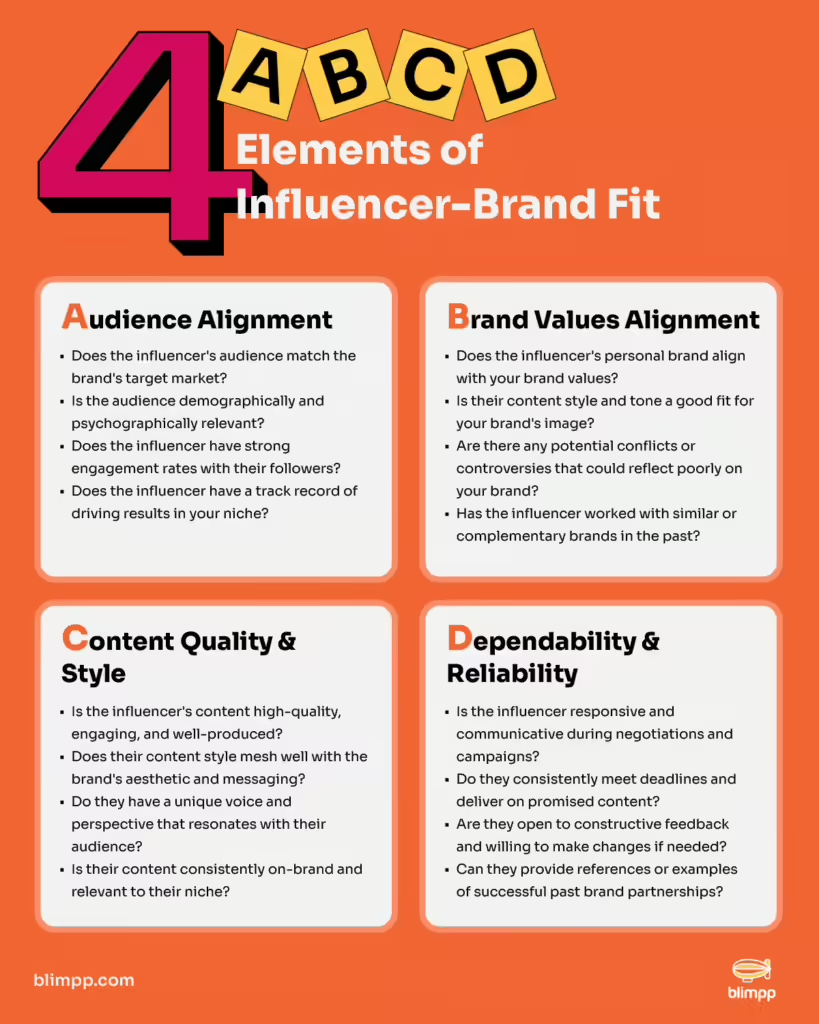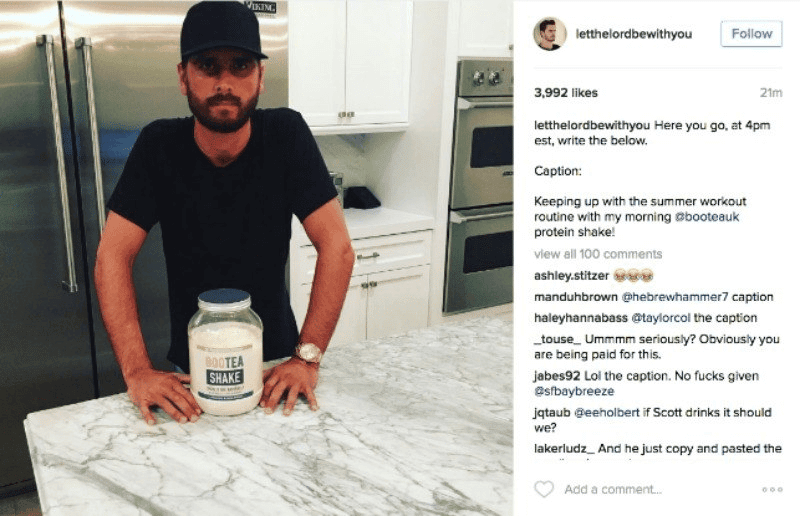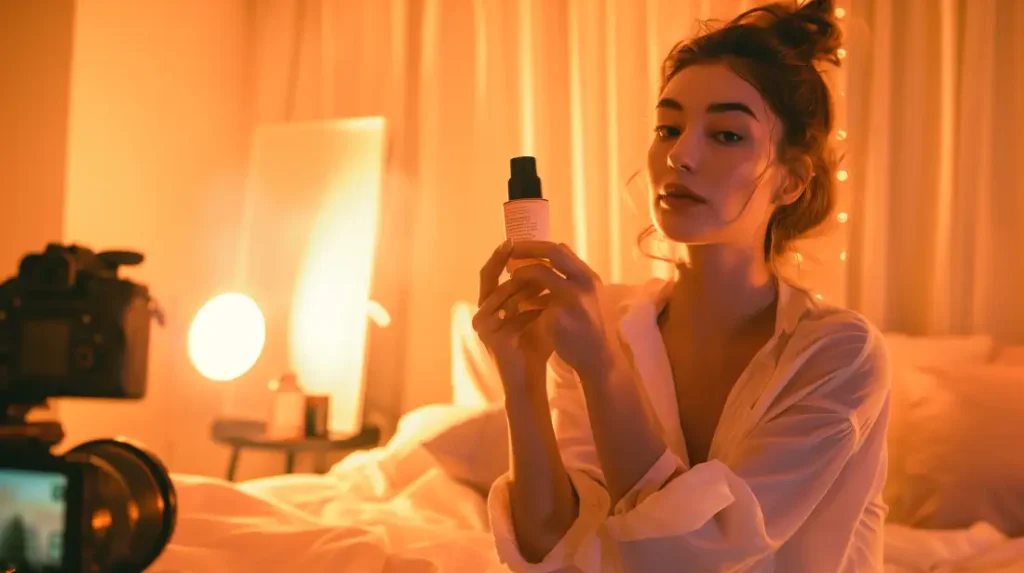You’ve heard the buzz about influencer marketing.
Brands partnering with social media stars to promote their products.
When it works, it can be a level-raiser for even the smallest eCommerce brands.
In a nutshell, a good influencer marketing strategy should drive engagement, reach target audiences, and boost sales.
But let’s be real – not every influencer campaign is a homerun.
Maybe you’ve even tried it yourself, only to be left scratching your head when the results fell flat.
So what’s the secret sauce? What separates a successful influencer partnership from a flop?
In this article, we’re going to dive into the ABCD’s of influencer marketing success; we’ll also discuss some of the common pitfalls that can hinder even the most promising influencer marketing campaign.
The Power of Influencer Marketing
First, let’s talk about why influencer marketing is such a big deal. A whopping 75% of people turn to social media for purchasing advice. MarketingDive also reports that 81% of consumers made a purchase based on an influencer’s recommendation in the last year.
There’s just something about that personal connection, that sense of trust – when an influencer gives a product their seal of approval, their followers listen.
This is especially true for luxury items, like high-end beauty or fashion products.
In fact, influencer endorsements can carry even more weight than customer reviews. So the potential is massive. But only if you do it right.
Common Problems That Hinder Influencer Marketing Strategy
So where do brands go wrong?
One of the biggest mistakes is ignoring audience alignment.
Just because an influencer has a huge following doesn’t mean they’re the right fit for your brand. While it’s tempting to simply go for the person with the biggest audience, the best track record, or the most attractive cost, the main ingredient in the influencer marketing success recipe is collaborating with influencers whose followers mirror your ideal customer.
If their audience doesn’t match your target customer, you’re wasting your time and money.
Another pitfall? Clashing values. If your brand is all about tradition and an influencer is known for being edgy and controversial…well, that’s a recipe for a PR disaster.
You also can’t ignore content quality. An influencer might have a million followers, but if their posts are blurry and their captions are sloppy…that reflects poorly on your brand.
And then there’s dependability. Some influencers look great on the surface but are a nightmare to work with behind the scenes. Missed deadlines, ignored agreements – it can derail your whole campaign and overall trust in influencer marketing as a channel.
There are a few other pitfalls to watch out for.
Focusing too much on going viral, for instance, instead of building long-term partnerships.
Or ignoring the power of micro-influencers, who often have more engaged, niche audiences.
Over-saturation is another risk. If an influencer is constantly promoting products, their endorsements can start to feel inauthentic.
And finally, there’s the issue of unclear objectives. If you don’t know what you’re trying to achieve with your campaign, you’ll have a tough time measuring success.
2. The ABCD Of Influencer Marketing Strategy
So how can brands navigate these challenges and create truly impactful influencer campaigns?
Enter the ABCD framework.

“A” is for Audience Alignment. Before you even reach out to an influencer, make sure their followers mirror your ideal customer. Look at demographics, interests, past performance in your niche.
Imagine you’re a skincare marketer with a multi-million dollar marketing budget.
You think you’re making a smart move by partnering with a mega-influencer who boasts millions of followers. The only problem is that their audience isn’t interested in what you’re selling, turning every post into a massive waste of time and money.
Just like brand-influencer alignment matters, so too does brand-audience alignment.
That’s why it’s important to collaborate with influencers whose followers mirror your ideal customer – don’t just look at their metrics, look at audience demographics and past performance in your specific niche.
“B” stands for Brand Values Alignment. Your influencer partners should authentically embody your brand philosophy and champion causes that resonate with your mission.
We mentioned this one first in our “pitfalls” section, and for very good reason.
Imagine you’re a CMO for a historic footwear brand. You partner with an influencer because you think their edgy style will give your brand some much-needed street cred.
However, their off-brand antics end up sparking a PR firestorm instead.
It’s essential to vet potential influencers for shared values rather than simply playing the “numbers game”.
If your brand’s entire concept is grounded in tradition, partnering with an edgy influencer isn’t going to produce the sort of results you want.
Instead, seek out influencers who authentically embody your brand philosophy and who champion causes that resonate with your mission. Otherwise, it’s like asking a vegan to sell filet mignon.
“C” is for Content Quality and Style. The influencers you work with should create compelling, on-brand content that captivates their audience.
Most influencers are good at this (as it’s a huge part of their job). During your search, try to look for people with a strong aesthetic and an engagement-driving style.
Do their posts captivate you? Do they seamlessly blend with your brand’s image? If their content stops you in your scroll, you’re on the right track.
And “D” represents Dependability and Professionalism. Vet potential partners for their track record of reliability and commitment.
Vet influencers for their track record of dependability.
Reliable influencers who treat your collaboration as a binding commitment, rather than a casual fling, are crucial for the smooth execution of your influencer marketing strategy.
If they aren’t affiliated with an agency, the best way to vet an influencer is to look at their past collaborations, evaluate their success, and maybe even contact the brand to get their opinion.
They might have an incentive to lie to you, but their past clients don’t.
So what does this look like in action? Take Gymshark’s partnership with Whitney Simmons. As a fitness influencer, Simmons’ audience aligns perfectly with Gymshark’s target customer. Her values and content style are also a natural fit for the brand. The result? Multiple successful product collaborations that feel authentic and engaging.

On the flip side, there are plenty of cautionary tales. Like the time Scott Disick accidentally copy-pasted his sponsorship instructions into an Instagram caption for Bootea protein shakes.

Talk about a lack of authenticity.
The key is to prioritize genuine, long-term partnerships over one-off viral attempts. Brands like AG1, for instance, prefer weekly shoutouts from their ambassadors to maintain a consistent, authentic presence.
Conclusion
At the end of the day, successful influencer marketing strategy is about quality over quantity.
It’s about partnering with influencers who truly align with your brand and can create meaningful connections with your audience.
By following the ABCD framework – Audience, Brand Values, Content, and Dependability – You can craft influencer campaigns that don’t just drive sales, but build lasting trust and loyalty.


